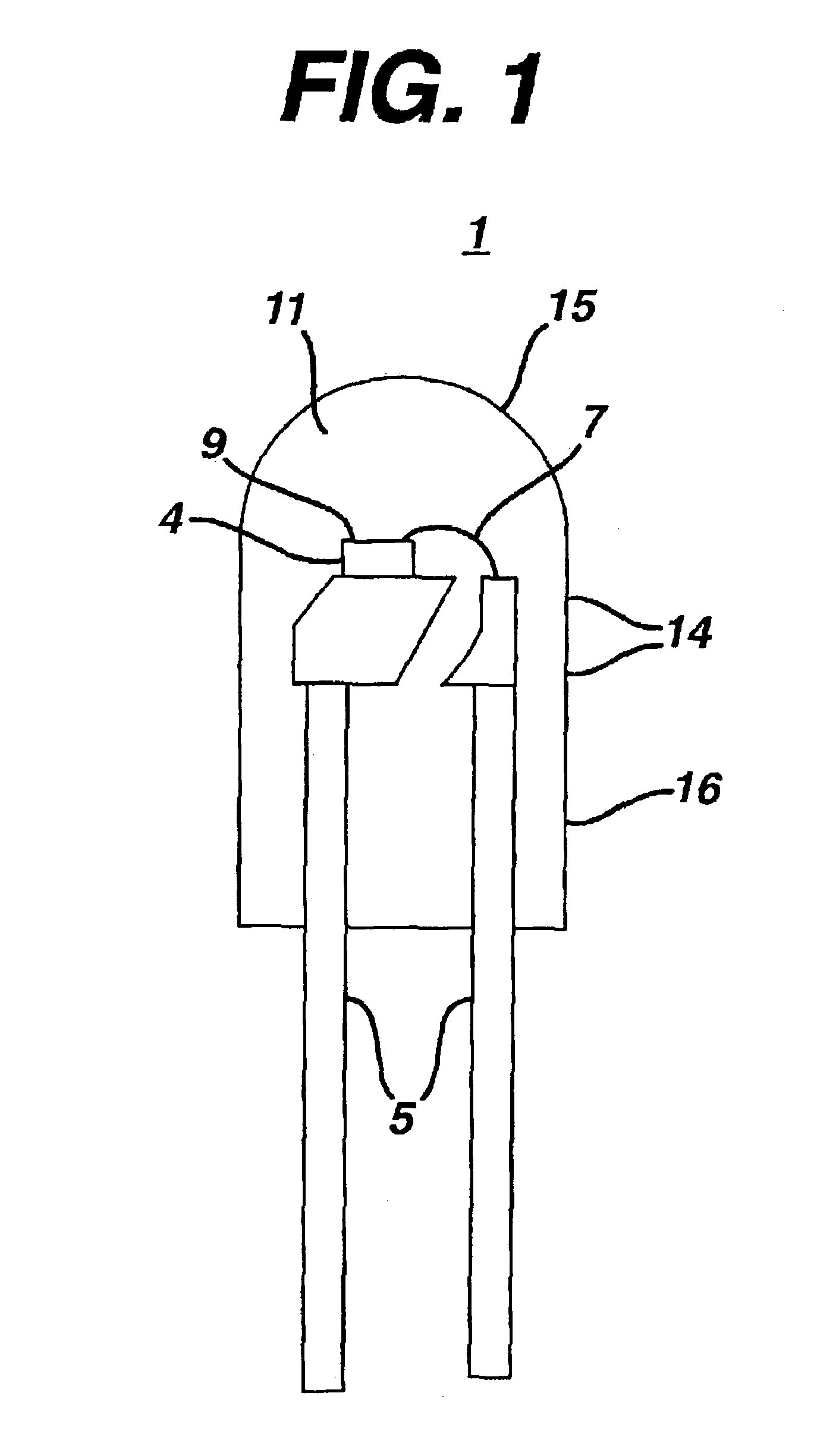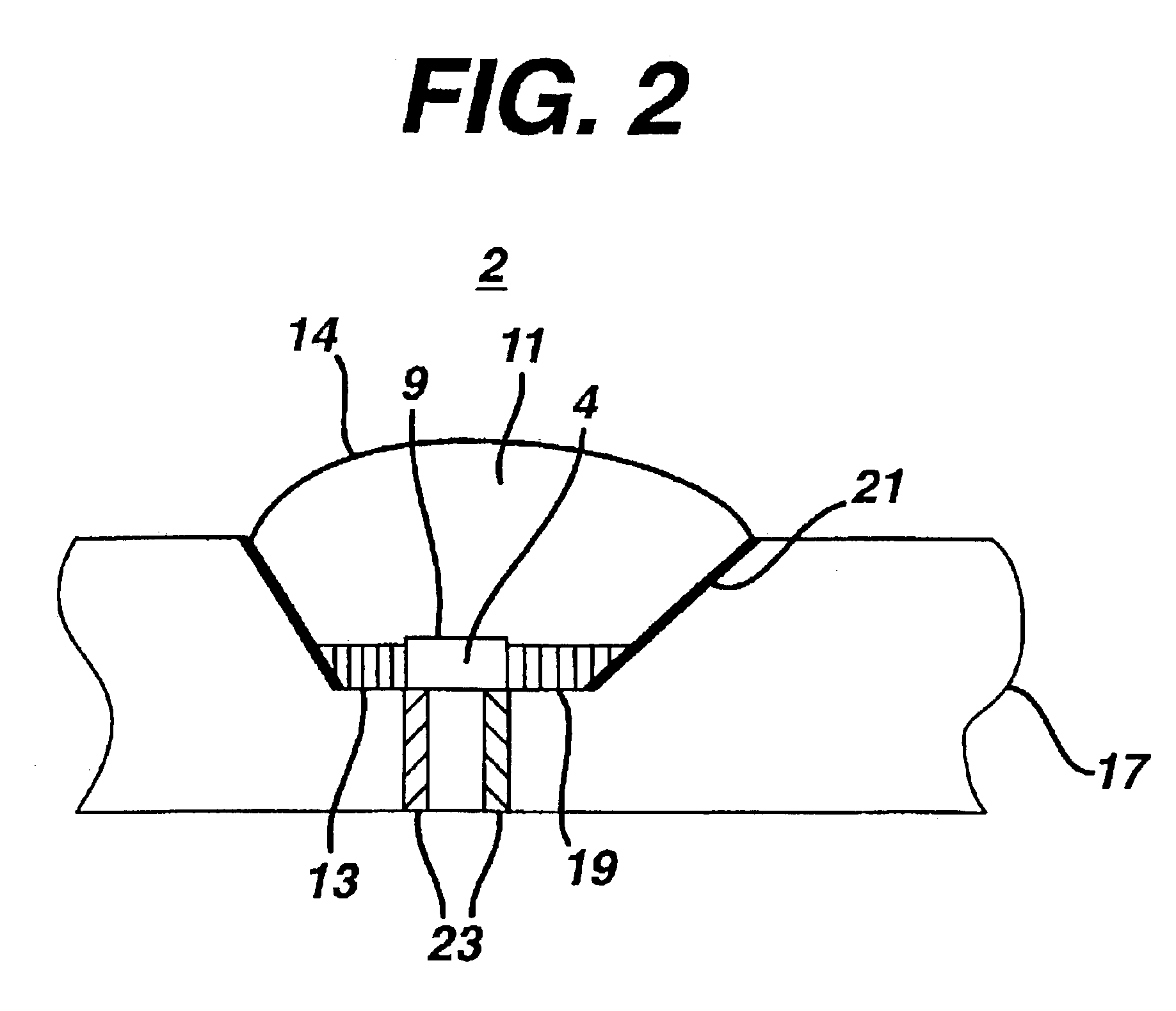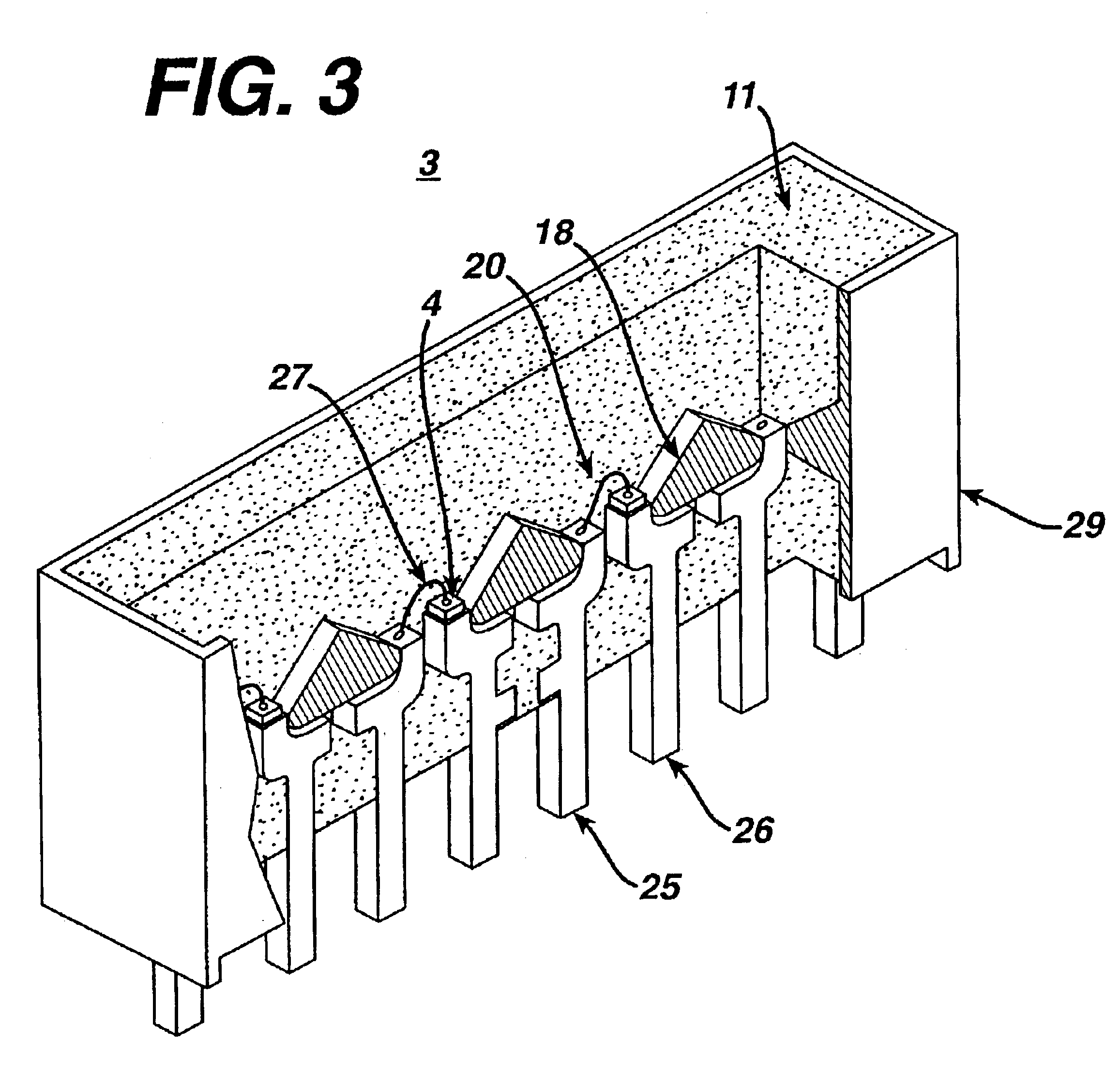Solid state device with encapsulant of cycloaliphatic epoxy resin, anhydride, and boron catalyst
a solid-state device and epoxy resin technology, applied in solid-state devices, semiconductor devices, semiconductor/solid-state device details, etc., can solve the problems of poor thermal aging stability, common packaging materials often undergo a gradual loss of optical and mechanical properties, and devices often exhibit special packaging needs
- Summary
- Abstract
- Description
- Claims
- Application Information
AI Technical Summary
Benefits of technology
Problems solved by technology
Method used
Image
Examples
examples 1-5
Epoxy resin encapsulants were prepared by combining the epoxy resins and curing agents as shown in Table 1 and curing under the specified conditions. Sub-stoichiometric amounts of anhydride were employed. All quantities are in parts by weight. The abbreviation “RT” means room temperature.
TABLE 1ComponentEx. 1Ex. 2Ex. 3Ex. 4Ex. 5Component A3,4-epoxycyclohexylmethyl-3,4-6675697173epoxycyclohexanecarboxylate(ERL 4221D)Component Bhexahydrophthalic anhydride331724147Component Ctrimethoxyboroxine—2246Component Dstannous octoate0.50.10.10.10.1Component E2,5-hexanediol—2246Component Ftriphenyl phosphite—2134Component Gglycidoxypropyltrimethoxy-silane—2134ProcessingCure time, time (hrs.) / temp. (° C.)3 / 1503 / 1103 / 11016 / RT,16 / RT,thenthen3 / 801 / 80PropertiesTg (° C.)97154154142138CTE, μm / m° C. (below / above TG)87 / 21354 / 16466 / 17564 / 17863 / 204YI, initial10.62.92.81.40.9YI, aged for 96 hrs. at 150° C.19.512.221.42734.5
As shown in Table 1 the use of sub-stoichiometric levels of anhydride leads to improv...
PUM
| Property | Measurement | Unit |
|---|---|---|
| molar ratio | aaaaa | aaaaa |
| molar ratio | aaaaa | aaaaa |
| molar ratio | aaaaa | aaaaa |
Abstract
Description
Claims
Application Information
 Login to View More
Login to View More - R&D
- Intellectual Property
- Life Sciences
- Materials
- Tech Scout
- Unparalleled Data Quality
- Higher Quality Content
- 60% Fewer Hallucinations
Browse by: Latest US Patents, China's latest patents, Technical Efficacy Thesaurus, Application Domain, Technology Topic, Popular Technical Reports.
© 2025 PatSnap. All rights reserved.Legal|Privacy policy|Modern Slavery Act Transparency Statement|Sitemap|About US| Contact US: help@patsnap.com



